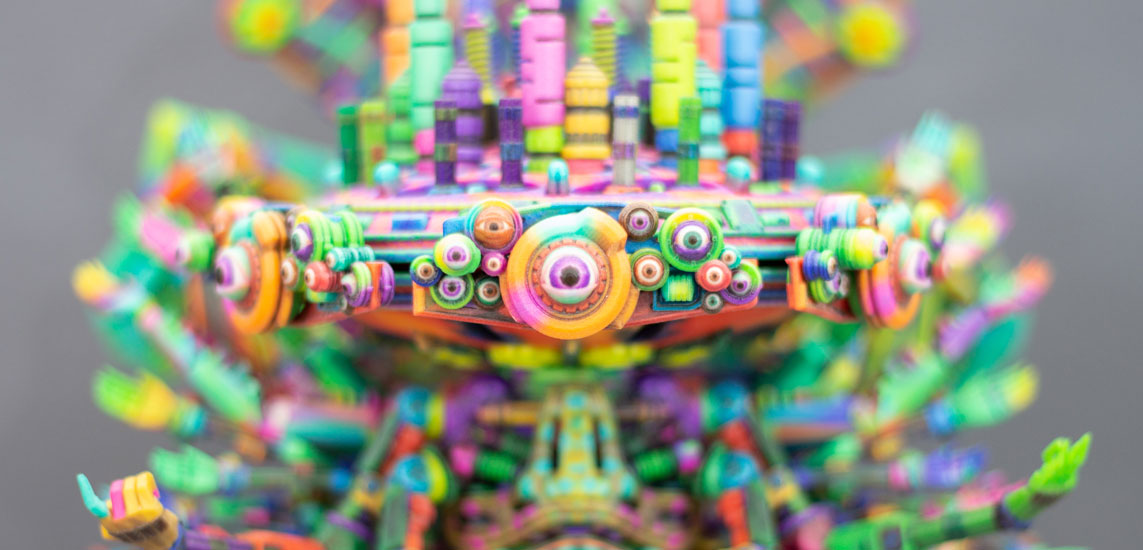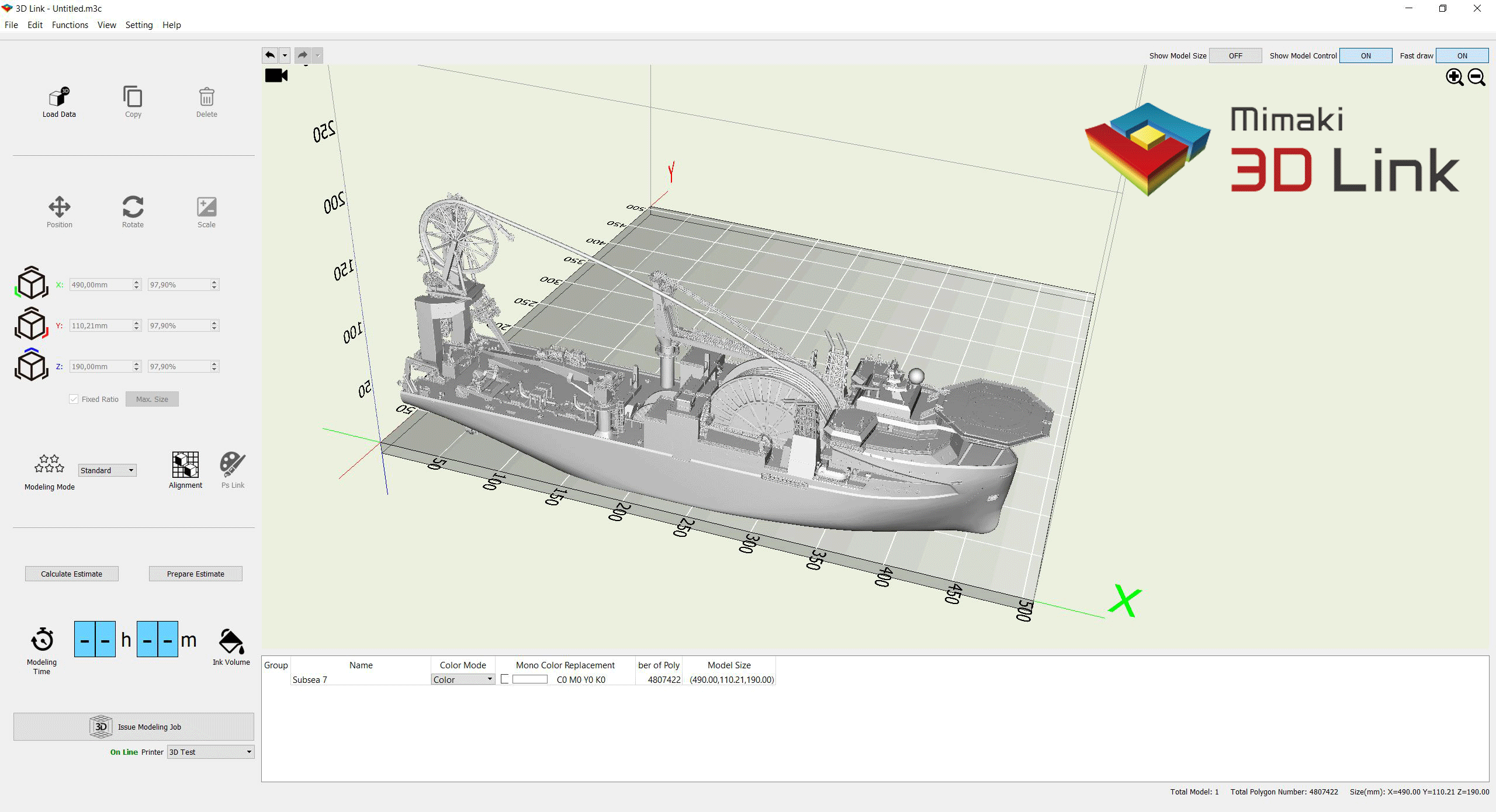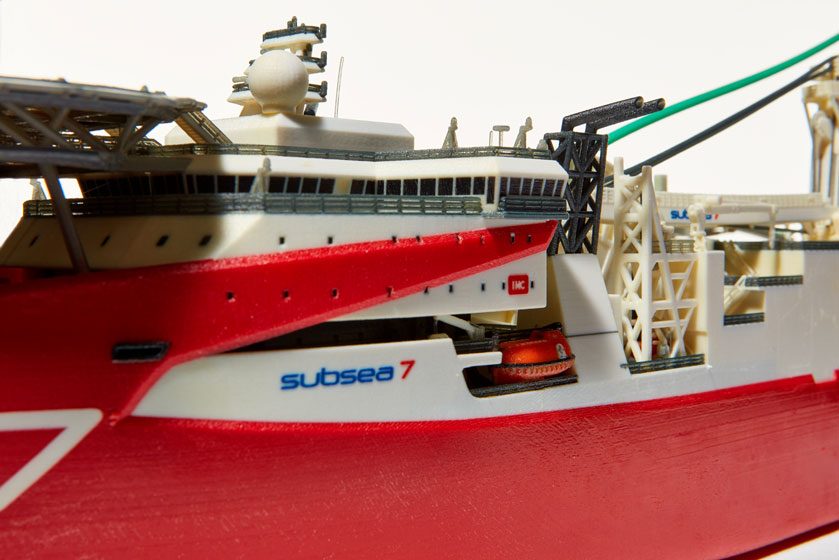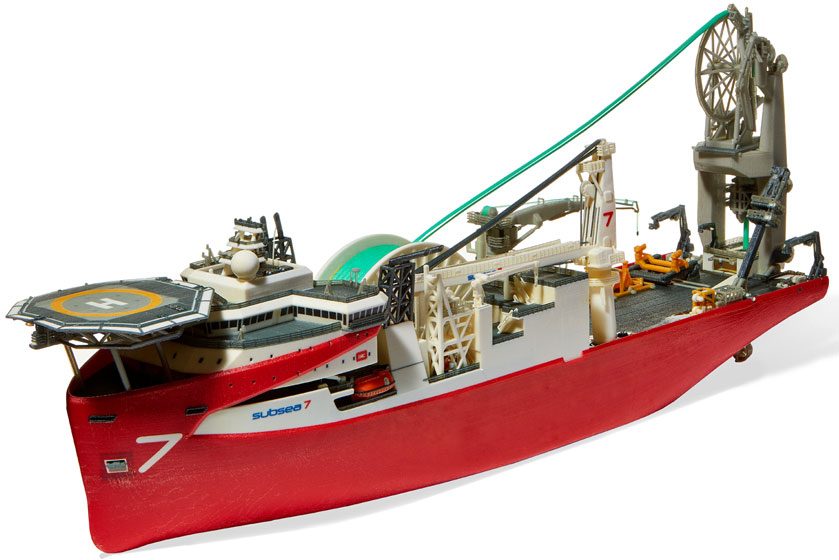
With industrial mass production touted as the next big thing, accurate colour simulation, achieved using the Mimaki 3DUJ-553, will be the key to its success.
En los últimos años se ha despertado mucho interés acerca de la impresión 3D. Si bien el mercado de la impresión 3D sigue su expansión global, en el sector existe la fuerte sensación de que la producción en masa será el próximo gran paso. En efecto, la fabricación aditiva está progresando rápidamente del prototipo a la producción plena, con mejoras en el flujo de trabajo y la estandarización, y con la automatización de camino. Sin embargo, en Mimaki tenemos motivos para esperar que se desarrolle otro escenario en paralelo con el leitmotiv “El color que se ve, es el color que se obtiene”. De hecho, creemos que el color será el factor clave en el crecimiento de la fabricación aditiva en diversas áreas durante 2019.
¡Ha llegado la hora del color 3D!
Los últimos avances en la tecnología de impresión 3D han logrado funciones a todo color, lo cual significa que la fabricación aditiva ahora puede producir modelos realistas de calidad fotográfica. Mimaki es pionera en este ámbito, gracias a su ya demostrada experiencia en el color y la gestión del color dentro del entorno de la impresión industrial 2D por inyección de tinta.
La nueva 3DUJ-553 de Mimaki es el primer sistema de impresión 3D por polímeros que permite utilizar más de 10 millones de colores planos distintos. Basada en la tecnología de inyección de tinta con secado UV, crea objetos mediante la inyección de capas de tinta sucesivas que se endurecen con cada pasada de luz LED UV. La 3DUJ-553 usa tintas CMYK, blanca y transparente para crear productos realistas de calidad fotográfica con colores brillantes, incluidos colores planos, sombras y degradados. Además, el uso de las tintas blanca y transparente permite producir efectos especiales, como texturas totalmente transparentes o texturas en capas con una transparente en el exterior y blanca o de color plano en el interior y viceversa, aumentando así las oportunidades en distintas aplicaciones.
Pues bien, esto solo es una parte de la historia. La otra tiene que ver con la compatibilidad con los perfiles de color ICC (una primicia mundial en la impresión 3D), algo crucial para la obtención de una simulación de colores precisos y una capacidad de reproducción perfecta, desde la pantalla de diseño al objeto 3D final impreso. Mimaki ha recurrido a su experiencia en impresión 2D para aplicarla a la impresión 3D: MPM3, un software patentado de gestión del color, permite precisión del color, ajustes del color y concordancia del color entre los mismos modelos de impresora a través de la ecualización (según la medición de las paletas de colores), para hacer que conseguir el mismo color en varias impresoras 3D sea posible sin importar en qué lugar del mundo se encuentren. Para ofrecer ventajas de calidad adicionales, Mimaki también ha introducido un sistema mejorado del control de la forma de onda que adapta la forma de onda para cada tinta utilizada. Si se pregunta a qué se refiere el concepto “forma de onda”, significa que las gotas de tinta se inyectan en círculos casi perfectos y se colocan con la precisión más absoluta, lo que produce una calidad de impresión impecable.
Por tanto, ¿cómo puede la 3DUJ-553 de Mimaki, con sus potentes colores, cambiar la vida de los diseñadores? Tres palabras clave lo resumen: calidad del resultado impreso, coincidencia de simulación y consistencia. El nuevo sistema de impresión 3D ayuda a los diseñadores a garantizar que los proyectos que crean en sus pantallas coinciden a la perfección con el resultado impreso, lo cual amplía las oportunidades creativas y proporciona ahorro de tiempo y dinero, siempre y cuando por supuesto, la calibración de la pantalla se haya realizado correctamente. Consistencia y repetibilidad aportan más ventajas en lo relativo a reducción de tiempo, coste de transporte y, en consecuencia, reducción del impacto medioambiental, pues una vez que el proyecto está listo para su impresión, la producción puede ejecutarse localmente con la garantía de que los productos finales tendrán el mismo aspecto.

Más allá del color
El color no es el único punto fuerte de nuestra tecnología de impresión 3D. La larga experiencia de Mimaki en la impresión industrial 2D por inyección de tinta, así como en la impresión por inyección de tinta directa a objeto, nos ha permitido ser precisos en todos los detalles de nuestros sistemas de impresión 3D.
La 3DUJ-553 está equipada con sistemas de circulación de tinta en el cabezal, lo que contribuye a evitar la sedimentación de los pigmentos y extraer las burbujas de aire cerca de los inyectores, y con NCU (Nozzle Check Unit), una unidad de detección de estado de los inyectores que permite que se lleve a cabo una limpieza automática cuando falta un inyector o hay alguno dañado. Ambas tecnologías se han tomado prestadas de los conocimientos sobre la impresión 2D por inyección de tinta de Mimaki y garantizan mayor tiempo de actividad y mejoras en la productividad, fiabilidad y estabilidad de la producción, también en la impresión 3D.
Otra función digna de mención es el área de modelado de 500x500x300 mm, que hace que la 3DUJ-553 admita una amplia gama de aplicaciones, incluidas las de prototipado y modelado a gran escala, con una precisión de alto nivel de detalle y posicionamiento eficiente de los objetos imprimibles.
En general, esperamos que en los próximos años se abran nuevas fronteras para las aplicaciones 3D. Desde el punto de vista de la tecnología, Mimaki está lista para aceptar los desafíos en materia de impresión 3D. Desde el punto de vista de las aplicaciones, hay distintos segmentos de mercado a los que es posible acceder con la nueva 3DUJ-553. Desde los modelos a escala, pruebas y prototipado al arte 3D, herramientas y equipos, figurillas, así como aplicaciones médicas y de formación, la tecnología de impresión 3D de potentes colores está lista para mejorar la forma en que esas industrias conciben la creatividad y para mejorar el proceso de producción en su conjunto.





